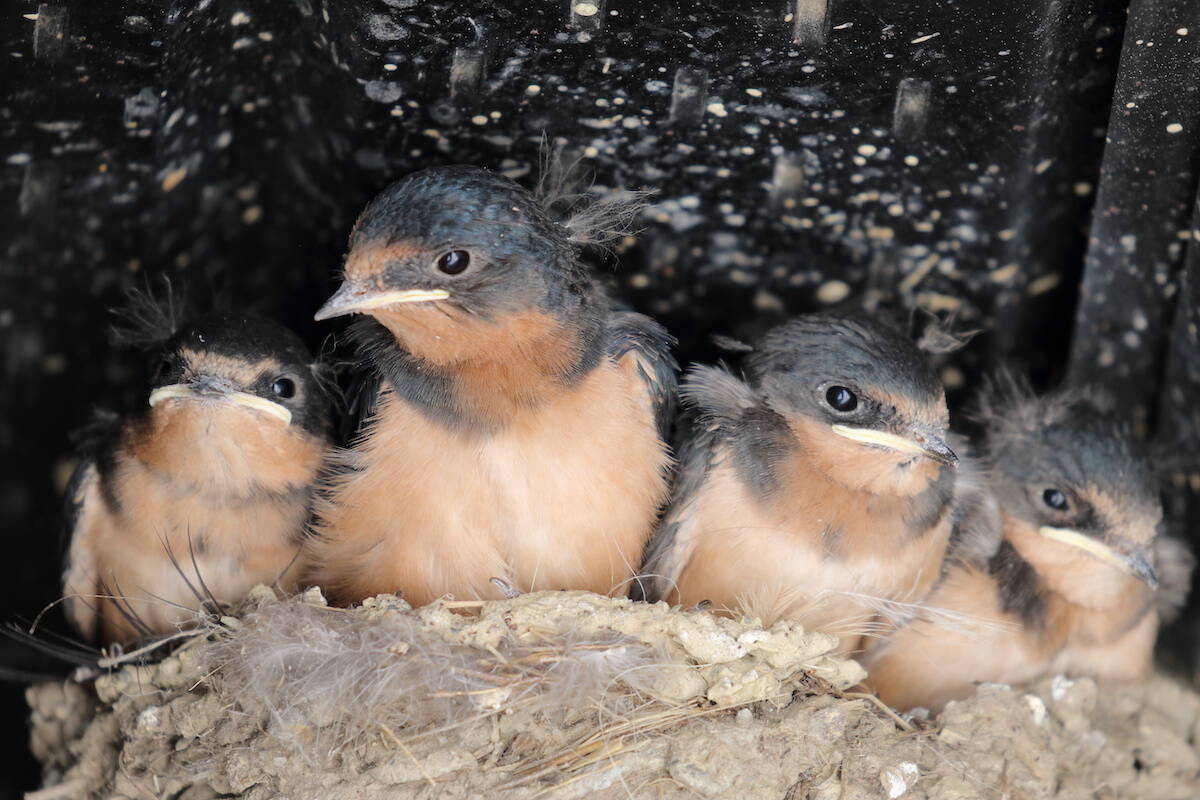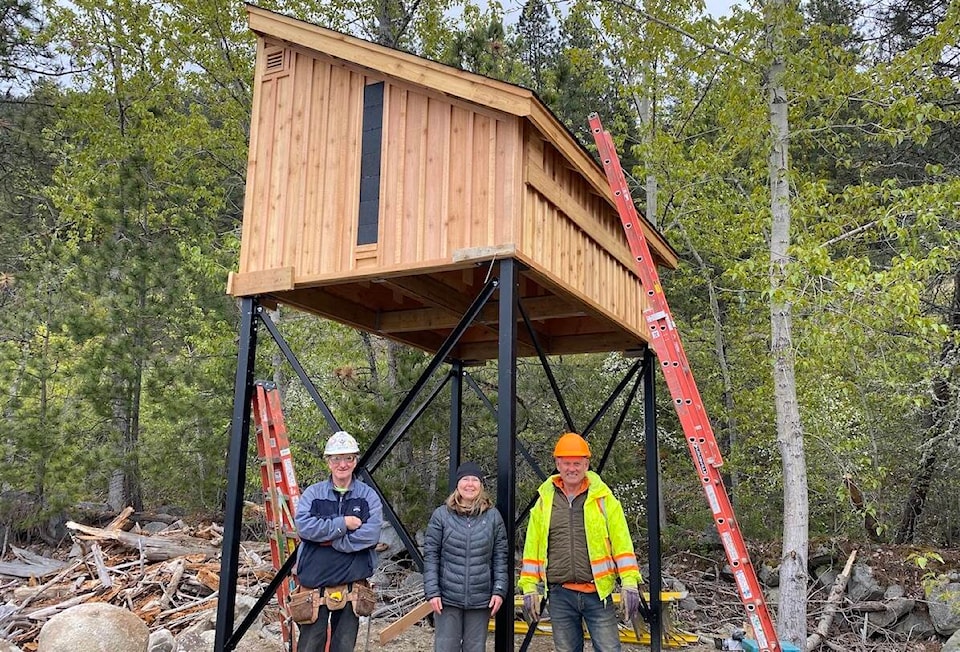Submitted by the Kootenay Conservation Program
At first glance one might imagine the Kuskanook Chalet in a coffee table book on modern architecture— a slant roof cabin perched on stilts at the edge of a pine forest. With its minimalist aesthetic and lake vista it seems set to score five stars on Airbnb. Except, small problem: there’s no door. At least not one for humans. This tiny chalet is designed and built for bats.
This project is one of a handful that provides important habitat for species at risk in the Kootenays. Who benefits from these new builds? Bats and swallows. And according to Marcy Mahr, Kootenay Connect manager for the Kootenay Conservation Program, their neighbours benefit too.
“Bats and swallows are aerial insectivores, meaning they catch food on the wing,” says Mahr. “Some people think they’re a nuisance, but given how many mosquitoes they consume they’re actually great neighbours.”
Funded by Environment and Climate Change Canada, Kootenay Connect helps to sustain regional biodiversity by providing for the needs of federally listed species at risk. Although gobbling skeeters is a perk (bats eat their weight in insects every night, swallows dine on roughly 850 mosquitoes a day) it’s their role within the entire ecosystem that makes them a target species for Kootenay Connect and its partners.

Wildlife Conservation Society Canada (WCSC) is one such partner. When a maternal colony of bats were evicted from a nearby home, WCSC installed the Kuskanook Chalet just north of the Creston Valley Wildlife Management Area, one of Kootenay Connect’s focal areas. Evictions like these are a big deal: half of the 16 bat species in B.C. are threatened, and habitat loss of any kind is a potential blow to the population.
“Bats are creatures of habit,” says Dr. Cori Lausen, director of bat conservation with WCSC. “If they can’t get into their familiar attic, sometimes they’ll actually hang on the outside of buildings.”
Add the fact some female bats live up to 40 years and return every year to the same roost to raise a single pup, it’s no surprise WCSC built a new roost just 100 metres from the bats’ original home.
A critical element of roosting habitat is temperature. Biologists now know bats need access to a variety of microclimates. For a nursing mama and her pup, 42 C is cozy but 44 C can be lethal. Informally called the “Goldilocks approach,” one solution is to provide habitat that won’t leave bats stuck with a roost that’s either too hot or too cold: it needs to be just right.
Bats aren’t the only mosquito-eating species who could use a boost. Throughout the Kootenays swallows can be seen gracefully feasting at high speed. Like bats, these birds are colony dwelling and sight of them may give an impression of abundance. But according to Birds Canada, over the last 40 years bank swallow populations declined by 98 per cent in Canada. Over the same time, barn swallow populations declined by 76 per cent.
Statistics like these motivated biologist Rachel Darvill to start the Upper Columbia Swallow Habitat Enhancement Project (UCSHEP), a project administered by Wildsight Golden. For the last three years Darvill and her team have been studying swallow colonies between Canal Flats and Edgewater.
“It’s easy to disregard swallows or think they’re all the same,” says Darvill, highlighting the Columbia Valley is home to six different species. “Many people don’t understand the challenges these swallows face, or know just how critical the habitat in this region is.”
Why swallow numbers have dropped is somewhat of a mystery. Although pesticide exposure, the massive decline of insects and climate change are factors, loss of nesting habitat is one cause Darvill feels her project can affect. To that end, UCSHEP has installed five artificial nesting structures and dozens of nesting cups throughout the Columbia Valley.
Although the presence of bats or swallows isn’t always welcome, learning to coexist not only means less mosquitoes, it supports the future of entire species. And with so many complementary habitat traits, cohabitation between these aerial insectivores seems ideal. This concept recently brought WCSC and UCSHEP together to build a dual-species home in Parson.
Wittily dubbed the Parson AirBnB (for Bats n Birds) it’s an example of habitat innovation through partnership. Future monitoring will reveal the rating its new inhabitants give. Hopefully, a glowing five stars.
